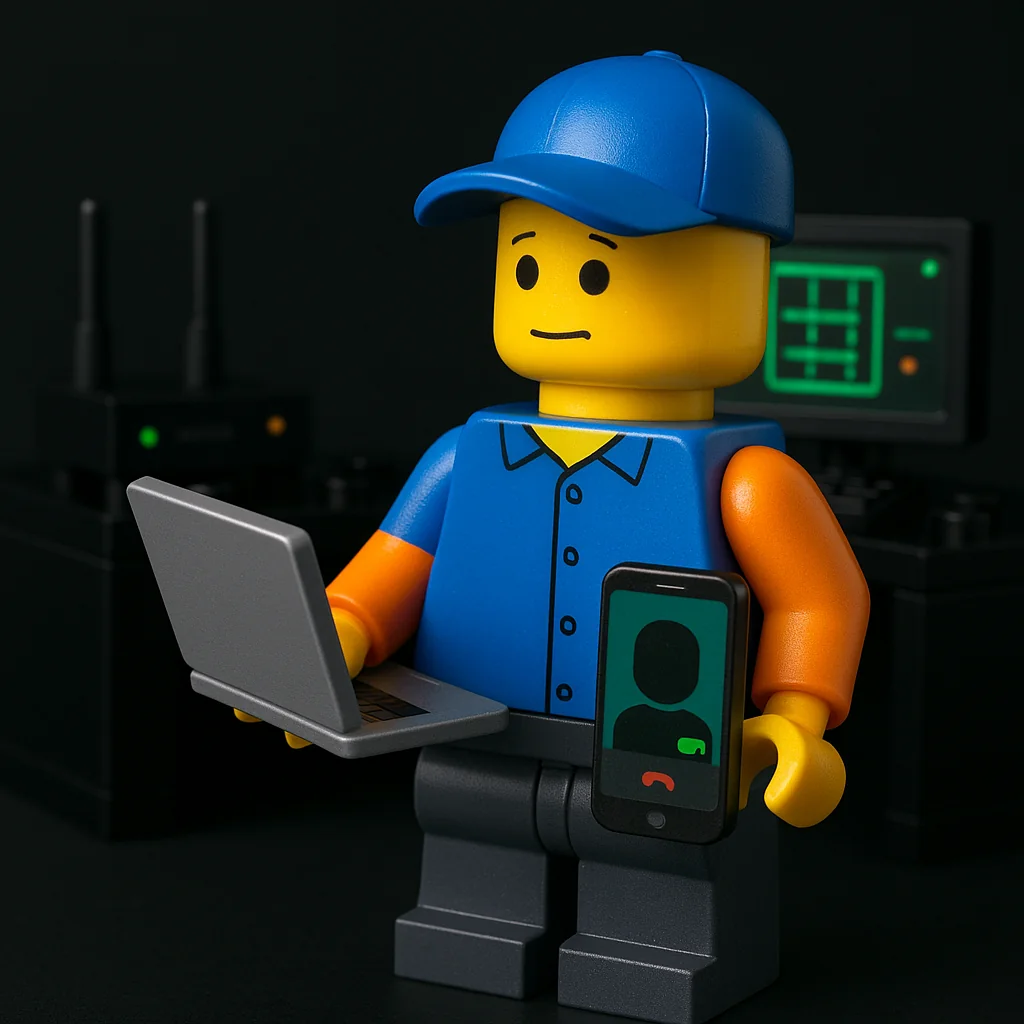Why do my video calls keep freezing or dropping?

Table of Contents
Likely:
- Wi-Fi signal weak where you sit; reposition router or add an AP.
- Upstream bandwidth saturated by backups or streaming.
- Outdated webcam/NIC drivers causing glitches.
- Browser hardware acceleration conflicts.
- QoS not configured on the router.
Need help? Check here: /services/house-calls/
What it might be (likely causes)#
Weak or inconsistent Wi‑Fi where you sit
Marginal signal → retries → frozen video. Move the router, add an access point, or steer your device to 5 GHz. Placement ideas: /posts/kirksville-wifi-dead-zones/ and small‑town router defaults: /posts/router-settings-small-town/Upstream saturation / bufferbloat
Calls are upload-sensitive. Cloud backups, camera uploads, or another call can saturate the uplink and add bufferbloat, causing delay and drops. Quick explainer: BufferbloatDrivers and hardware acceleration
Old NIC/webcam/GPU drivers or flaky hardware acceleration in the browser/app can freeze frames. Updating drivers or toggling acceleration often stabilizes it.QoS not prioritizing real‑time traffic
With multiple users/devices, lack of QoS means calls compete with bulk traffic. A basic SQM/QoS setup can keep latency low even under load. Background: Quality of serviceISP variability during peak hours
Neighborhood congestion or unstable modems can spike latency. Local context and options: /posts/isps-in-kirksville/
Things to check (quick, safe wins)#
Move closer or wire up
For a test, sit in the same room as the router or plug in Ethernet/USB‑Ethernet. If stability returns, plan better Wi‑Fi coverage or a wired drop where you work.Pick the right band and channel
Use 5 GHz with a distinct SSID (e.g.,Home‑5G) for laptops/phones. Set 2.4 GHz to 1/6/11 and pick a clean 5 GHz channel (avoid DFS while testing). How‑to: /posts/router-settings-small-town/ and apartment RF notes: /posts/router-interference-apartments/Pause uploads & heavy downloads
Temporarily pause cloud backups, Steam/console updates, and large transfers during calls. If calls instantly stabilize, configure schedules or QoS.Test for bufferbloat
Run an online latency‑under‑load test before a call (e.g., Waveform bufferbloat test). If latency spikes hundreds of ms under load, set QoS/SQM on the router.Update drivers & apps
- NIC/Wi‑Fi, GPU, and webcam drivers from the vendor.
- Update Zoom/Teams/Meet clients.
- If using a browser, toggle Use hardware acceleration off/on to compare.
Camera and mic sanity
Use 720p instead of 1080p on weak links; switch off virtual backgrounds to reduce GPU/CPU load. If audio crackles while video freezes, suspect CPU load or drivers.Router reboot & firmware
Reboot the router/modem before important calls. Install stable firmware updates that address Wi‑Fi or QoS bugs.Prefer Ethernet for the host device
Even a cheap USB‑C/USB‑A Ethernet dongle can make a laptop rock‑solid for calls.
Patterns that point to the cause#
- Good for a few minutes, then degrades → background upload or ISP congestion.
- Freezes when you move rooms → Wi‑Fi coverage; add an AP or reposition.
- Only your PC has issues; phone is fine → driver/acceleration on the PC. See: /posts/why-is-my-internet-fast-on-my-phone-but-slow-on-my-pc/
- Audio OK but video freezes → GPU/browser acceleration or webcam driver.
- Everyone at home lags at once → upstream saturation or ISP hiccup; consider QoS and check: /posts/isps-in-kirksville/
When to pause and get hands‑on help#
- Calls fail even beside the router and with uploads paused.
- Ethernet is stable but Wi‑Fi isn’t (needs AP/mesh planning and channel work).
- You need SQM/QoS tuned for your exact ISP speed and modem.
An on‑site survey with spectrum checks, wired tests, and QoS setup turns video calls from roulette into routine.
Insight#
Video calls are fragile because they care about latency more than raw speed. A single saturated upload or a weak RF hop can add seconds of delay and a cascade of freezes. Build a path that keeps latency low—solid signal, minimal background traffic, and simple QoS—and calls become boring in the best way: you stop thinking about them.
Want predictable calls in Kirksville—coverage mapping, wired runs, or QoS that actually works?
See /services/house-calls/.